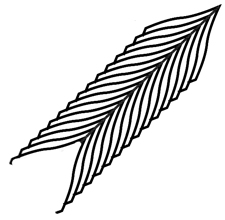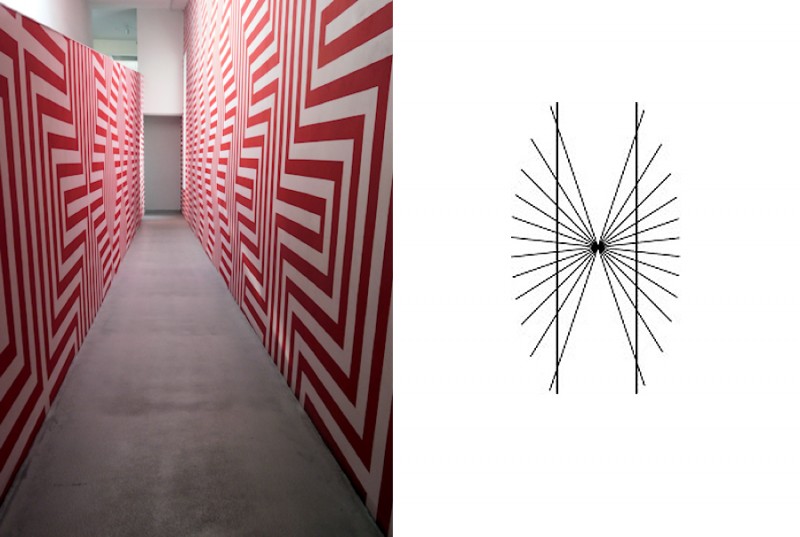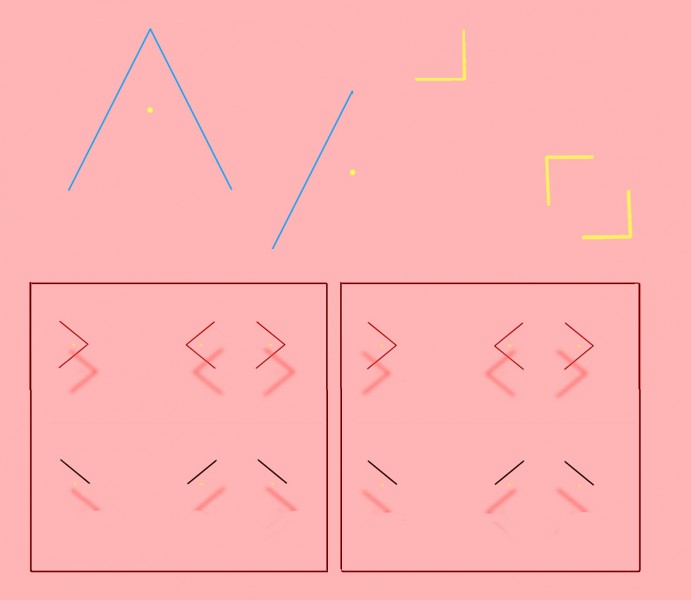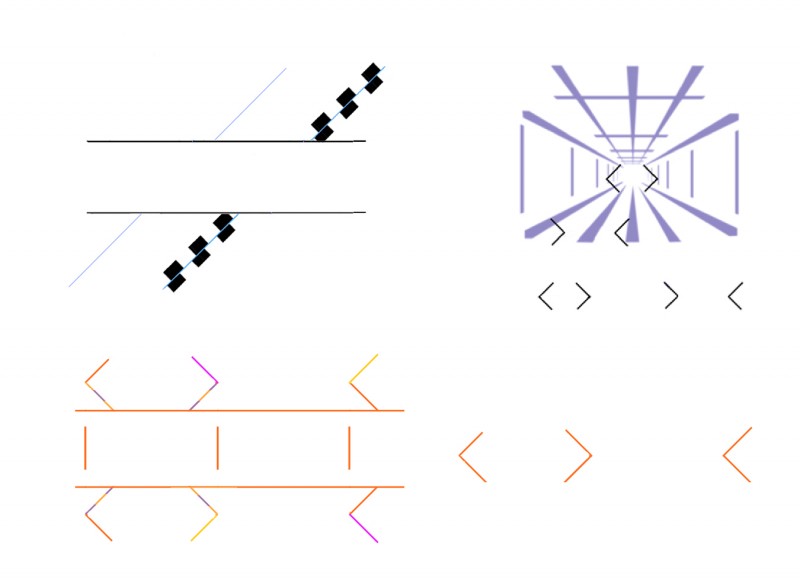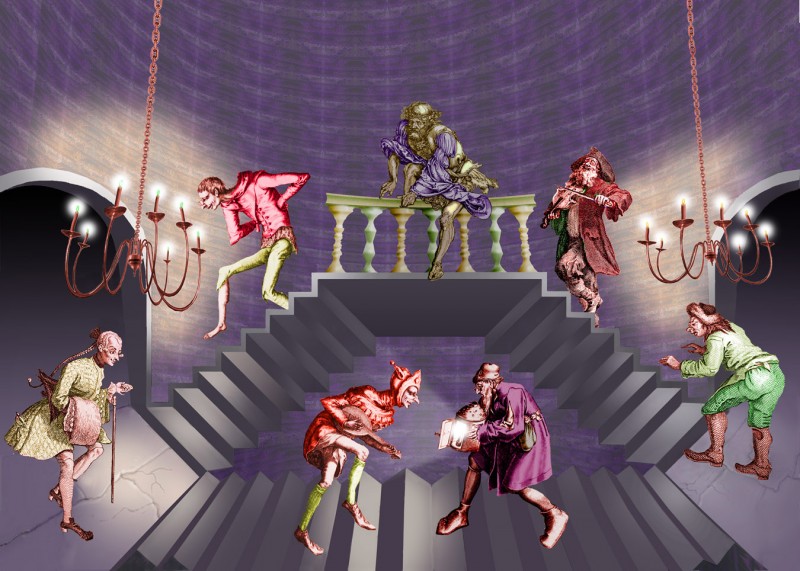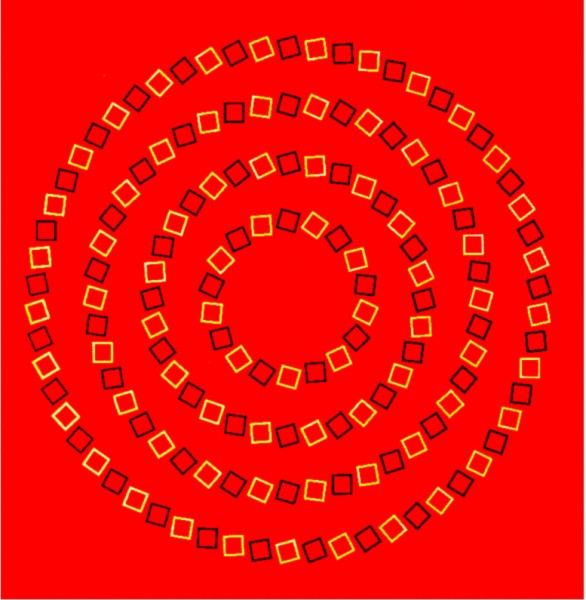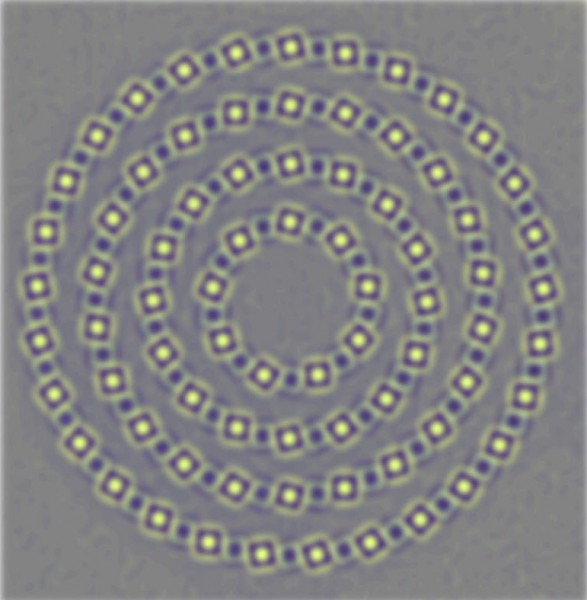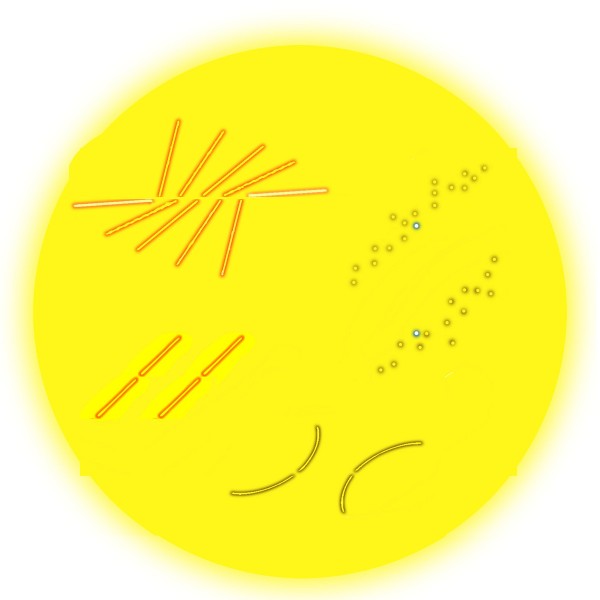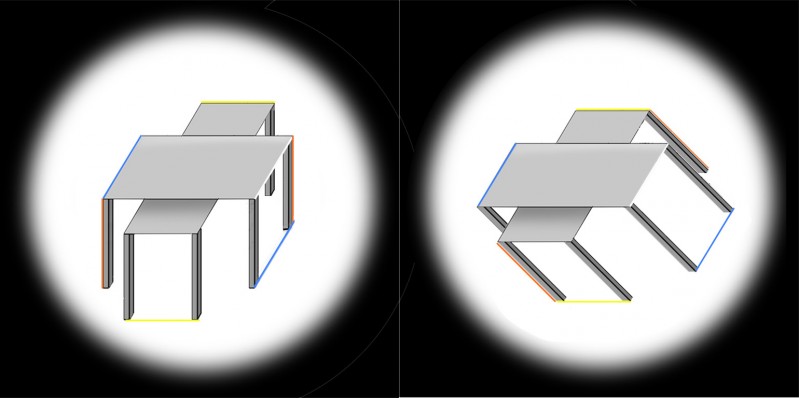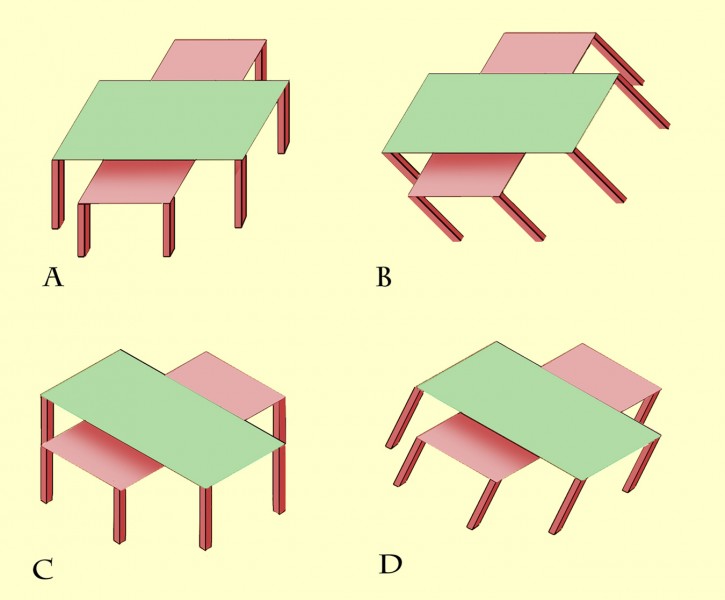Here’s a new way of looking at the Muller-Lyer illusion – paradoxically.
In the Muller-Lyer illusion, a line segment ending with outward pointing arrowheads looks shorter than an identical segment ending with inward pointing arrowheads. So in this version, whenever the arrowheads are visible, the left end of the line looks shorter than the (objectively identical) right end.
Here’s the paradox. When the arrowheads appear, the line segments instantly appear different in length, and yet the positions of the little globes marking the ends and centre-point of the line don’t appear to shift at all – which is impossible.
To make the point, in the bottom line, I’ve added an animated shift in the position of the middle globe, of just about the extent needed to produce the difference in apparent lengths of the line segments induced in the top line by the arrowheads.
The paradox is an example of the way that these so-called geometric illusions are not really so geometric. Draw a figure, and if you change the length of a line, at least one of the line endpoints has to shift as well. But in perceptual space it doesn’t necessarily follow. So perceptual space can be pretty weird, or as researchers sometimes call it, non-Euclidean, because it isn’t always bound by the rigid constraints set out by the ancient Greek geometer Euclid.
(I’ve changed this post at 16/5/12. There was other stuff in the original version, but it got much too complicated).
